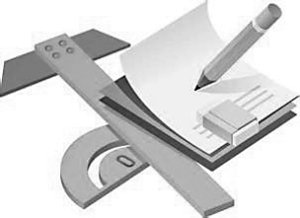下面是小编为大家整理的美国小学STEM课程案例研究——以4-5年级乐高机器人教学为例(完整),供大家参考。

分类号
密级
UDC
编号
硕士研究生学位论文
论文题目:
美国 小学 M STEM 课程案例研究 —以 以 4 4- -5 5 年级乐高机器人 教学 为例
英 文 题 目 :
:
Case Study of STEM Curriculum in American Elementary Schools- - Taking Lego Robot Teaching in Grades 4- - 5 as an Example
学
院
信息学院
专业名称
教育技术学(教育学)
研究方向
M STEM 教育
研究生姓名 吕文洁 学号 1723100004 导 师 姓名
邓鹏
职称
副教授
2020 年 5 月 31 日
独创性声明
本人声明所呈交的学位论文是我个人在导师指导下进行的研究工作及取得的研究成果。尽我所知,除文中已经标明引用的内容外,本论文不包含任何其他个人或集体已经发表或撰写过的研究成果。对本文的研究做出贡献的个人和集体,均已在文中以明确方式标明。本人完全意识到本声明的法律后果由本人承担。
学位论文作者签名:
年 月
日
学位论文版权使用授权书
本学位论文作者完全了解学校有关保留、使用学位论文的规定,即:学校有权保留并向国家有关部门或机构送交论文的复印件和电子版,允许论文被查阅和借阅。本人授权云南师范大学可以将本学位论文的全部或部分内容编入有关数据库进行检索,可以采用影印、缩印或扫描等复制手段保存和汇编本学位论文。
学位论文作者签名:
指导教师签名:
年
月
日
年
月
日
摘要 I
摘要 随着 21 世纪科学技术的快速发展,STEM 教育受到世界各国的追捧和重视,我国也不例外。目前国内对中小学 STEM 教育已有一定的研究,但是《中国 STEM教育白皮书》中提到计算机编程科目在中小学几乎没有。而在科学技术飞速发展的今天,机器人已逐渐进入我们生活的方方面面,学生对学习和了解机器人非常感兴趣。然而从文献和案例分析来看,国内对小学乐高机器人 STEM 课程设计处于起步阶段,相关教育工作者对小学乐高机器人 STEM 课程研究比较少且还未深入。由于美国有着比较成熟的 STEM 课程设计模式,且理论研究和实践研究比较深入成熟,同时美国小学 4-5 年级与中国小学 5-6 年级学生认知发展处于具体运算阶段和形式运算阶段之间,具有一定抽象思维和解决问题能力。因此,本研究采用文献研究法、专家调查法、问卷调查法和案例分析法展开研究,通过泰勒原理、迪克和凯里教学设计模型、布鲁姆分类教学目标、美国 6E 教学模式及评价指标体系构建原则试图构建 STEM 课程案例分析框架,并根据 STEM 课程案例分析框架构建 STEM 课程案例评价指标体系。所以笔者通过选取美国小学4-5 年级的 10 个乐高机器人 STEM 课程案例进行整理分析,总结归纳出 STEM 课程设计优缺点,从而为我国提供参考。
通过对美国小学 4-5 年级乐高机器人 STEM 课程案例进行梳理发现,其课程设计优点为:第一,课程实施方面,基于工程设计过程展开实施;第二,课程内容方面,注重课程内容与现实生活密切联系,课程内容具有整合性和实践性;第三,课程评价方面,采用课堂嵌入式评价且评价贯穿于整个教学过程;但同时也存在不足,包括缺乏使用交流协作工具及教学环境单一,忽视培养学生利用信息技术自主检索和收集信息能力,课堂引入方式缺乏新颖性及拓展部分内容没有具体实施。因此,笔者根据 STEM 课程设计优点和不足之处,做到取其精华去其糟粕,结合《中国 STEM 教育白皮书》和《中国学生发展核心素养》,从学习者分析、游戏导入、工程设计过程探究、成果分享、嵌入式评价反思和拓展六个环节试图构建适合我国小学 5-6 年级乐高机器人 STEM 课程设计框架,为我国小学一线教师和教育工作者提供乐高机器人 STEM 课程设计思路。
关键词:乐高机器人;小学 4-5 年级;STEM 教育;评价指标
Abstract II
Abstract With the rapid development of science and technology in the 21st century, STEM education is sought after and valued by countries all over the world, and my country is no exception. At present, there has been some research on STEM education in primary and middle schools in China, but the "White Paper on Chinese STEM Education" mentioned that there are almost no computer programming subjects in primary and secondary schools. Today, with the rapid development of science and technology, robots have gradually entered all aspects of our lives, and students are very interested in learning and understanding robots. However, judging from the literature and case analysis, domestic LEGO robot STEM curriculum design is in its infancy, and relevant educators have little research on the LEGO robot STEM curriculum in primary schools and have not yet conducted in-depth research. Because the United States has a relatively mature STEM curriculum design model, and the theoretical research and practical research are relatively mature, at the same time, the cognitive development of American primary school students in grades 4-5 and Chinese primary school students in grades 5-6 is between the specific computing stage and the formal computing stage. Have certain abstract thinking and problem solving skills. Therefore, this study adopts literature research method, expert survey method, questionnaire survey method and case analysis method to conduct research, through Taylor principle, Dick and Carey teaching design model, Bloom classification teaching target, American 6E teaching model and evaluation index system The construction principle attempts to construct a case analysis framework for STEM courses, and constructs a case evaluation index system for STEM courses based on the case analysis framework for STEM courses. Therefore, the author selects and analyzes 10 Lego robot STEM course cases in grades 4-5 of American primary schools, summarizes and summarizes the advantages and disadvantages of STEM course design, and provides reference for my country. Through sorting out the cases of Lego robot STEM courses in grades 4-5 in American primary schools, the advantages of course design are as follows: first, the
Abstract III
implementation of the course, based on the engineering design process; second, the content of the course, focusing on the course content and real life Close contact, the course content is integrated and practical; third, in the course evaluation, the classroom embedded evaluation is used and the evaluation runs through the entire teaching process; but there are also deficiencies, including the lack of use of communication and collaboration tools and the single teaching environment, neglected Cultivate students" ability to use information technology to retrieve and collect information autonomously. The method of classroom introduction lacks novelty and expands some content without specific implementation. Therefore, based on the advantages and disadvantages of STEM curriculum design, the author takes its essence and removes its dross, and combines the "Chinese STEM Education White Paper" and "Chinese Student Development Core Literacy" to explore the process of learner analysis, game introduction, and engineering design. , Achievement sharing, embedded evaluation, reflection and expansion of six links trying to build a framework for the design of LEGO robotic STEM curriculum suitable for grades 5-6 in China"s elementary schools, to provide Chinese primary school teachers and educators with LEGO robotic STEM curriculum design ideas. Key words: Lego robot; grades 4-5 of primary school; STEM education; Evaluation index
目录 IV
目录 摘要 ..................................................... I Abstract ................................................. II 第一章 绪论 .............................................. 1 第一节 选题缘由 ................................................. 1 一、 国家对 STEM 教育的重视 .............................................. 1 二、 机器人教育现状引发的思考 ........................................... 1 第二节 研究目的和意义 ........................................... 2 一、 研究目的 ........................................................... 2 二、 研究意义 ........................................................... 3 第三节 研究现状 ................................................. 3 一、 国内研究现状 ....................................................... 3 二、 国外研究现状 ....................................................... 4 第四节 研究方法及研究框架 ....................................... 5 一、 研究方法 ........................................................... 5 二、 研究框架 ........................................................... 6 第五节 概念界定及案例分析理论基础 ............................... 8 一、 概念界定 ........................................................... 8 二、 案例分析理论基础 .................................................. 10 第二章 构建 STEM 课程案例评价指标体系依据 ................ 16 第一节 STEM 课程案例评价指标构建的基本原则 ..................... 16 一、 STEM 课程案例评价指标收集与整理 .................................... 16 二、 美国相关教育质量标准 .............................................. 17 第二节 STEM 课程案例评价指标体系构建流程 ....................... 21
目录 V
第三章 构建 STEM 课程案例评价指标体系 .................... 23 第一节 构建 STEM 课程案例分析框架 ............................... 23 第二节 STEM 课程案例评价指标的制定 ............................. 24 一、 教学目标的二级指标界定与评价标准 .................................. 24 二、 教学内容的二级指标界定与评价标准 .................................. 25 三、 教学实施环节的二级指标界定与评价标准............................... 26 四、 教学评价的二级指标界定与评价标准 .................................. 27 五、 教学辅助条件的二级指标界定与评价标准............................... 27 第三节 评价指标构建及修改 ...................................... 28 一、 评价指标构建 ...................................................... 28 二、 评价指标修改 ...................................................... 30 第四节 评价指标体系信度和效度分析 .............................. 37 一、 调查问卷数据 ...................................................... 38 二、 评价指标体系信度分析 .............................................. 38 三、 评价指标体系效度分析 .............................................. 39 第五节 本章小结 ................................................ 42 第四章 案例分析 ......................................... 43 第一节 选取案例 ................................................ 43 一、 案例选取依据 ...................................................... 43 第二节 案例评价分析 ............................................ 50 一、 学习者分析维度评价分析 ............................................ 50 二、 教学目标维度评价分析 .............................................. 53 三、 教学内容维度评价分析 .............................................. 58 四、 教学实施环节维度评价分析 .......................................... 60 五、 教学评价维度评价分析 .......................................






